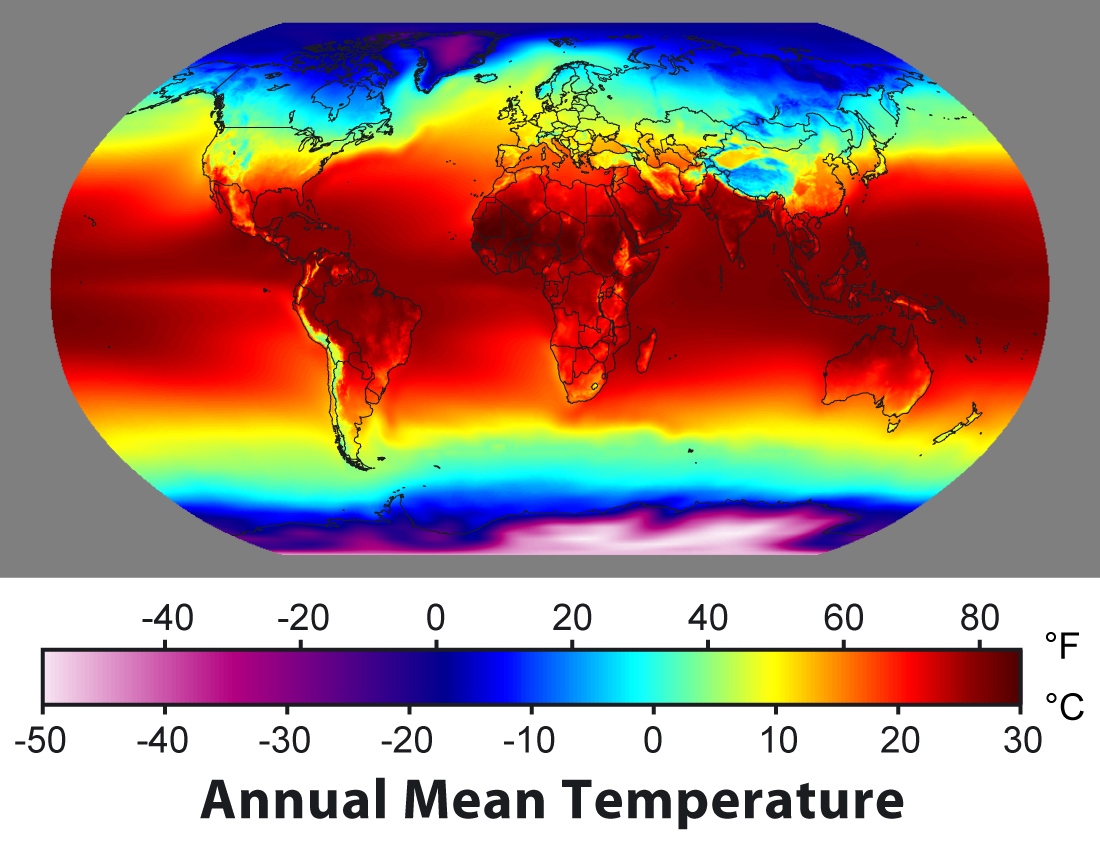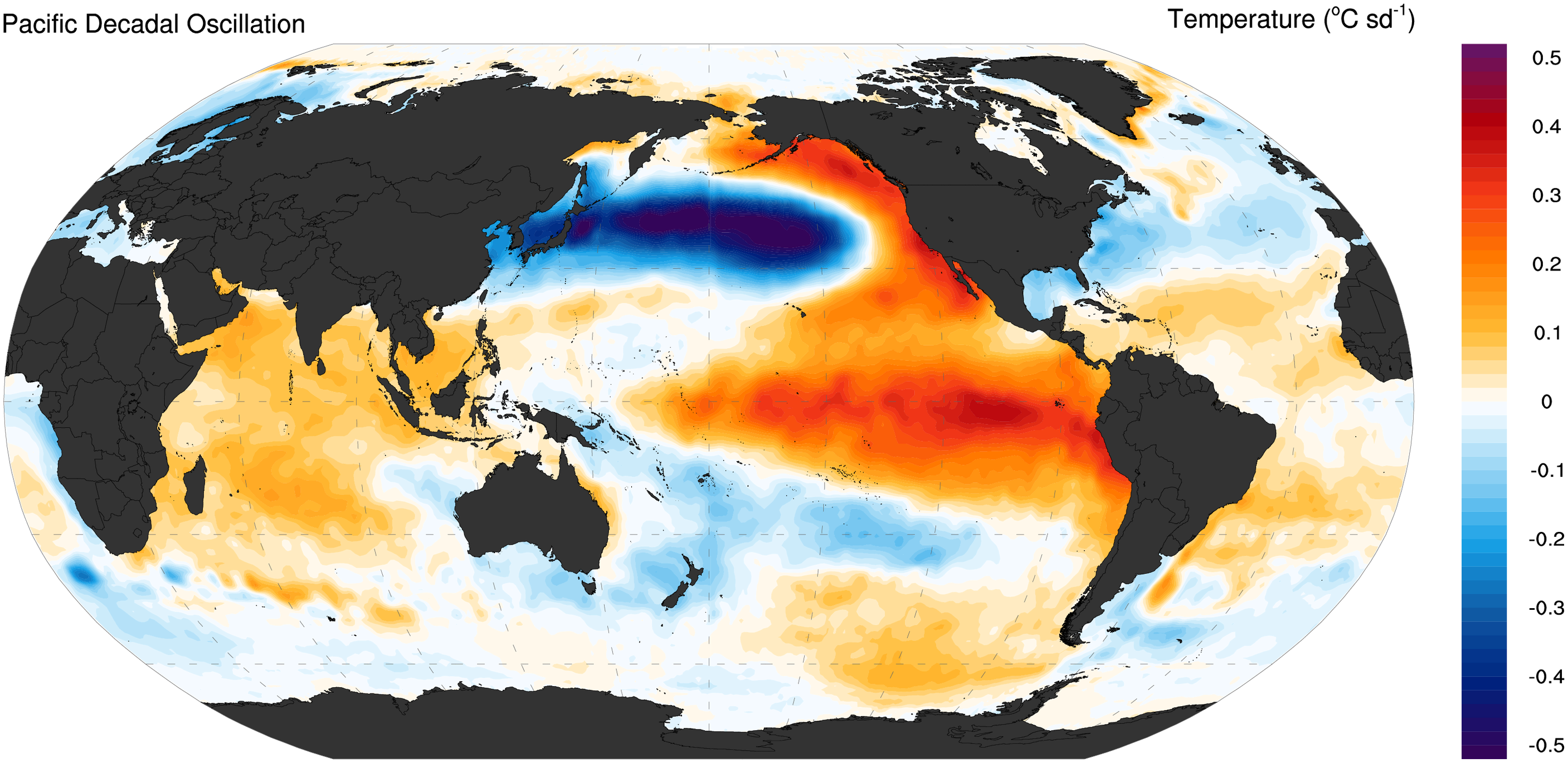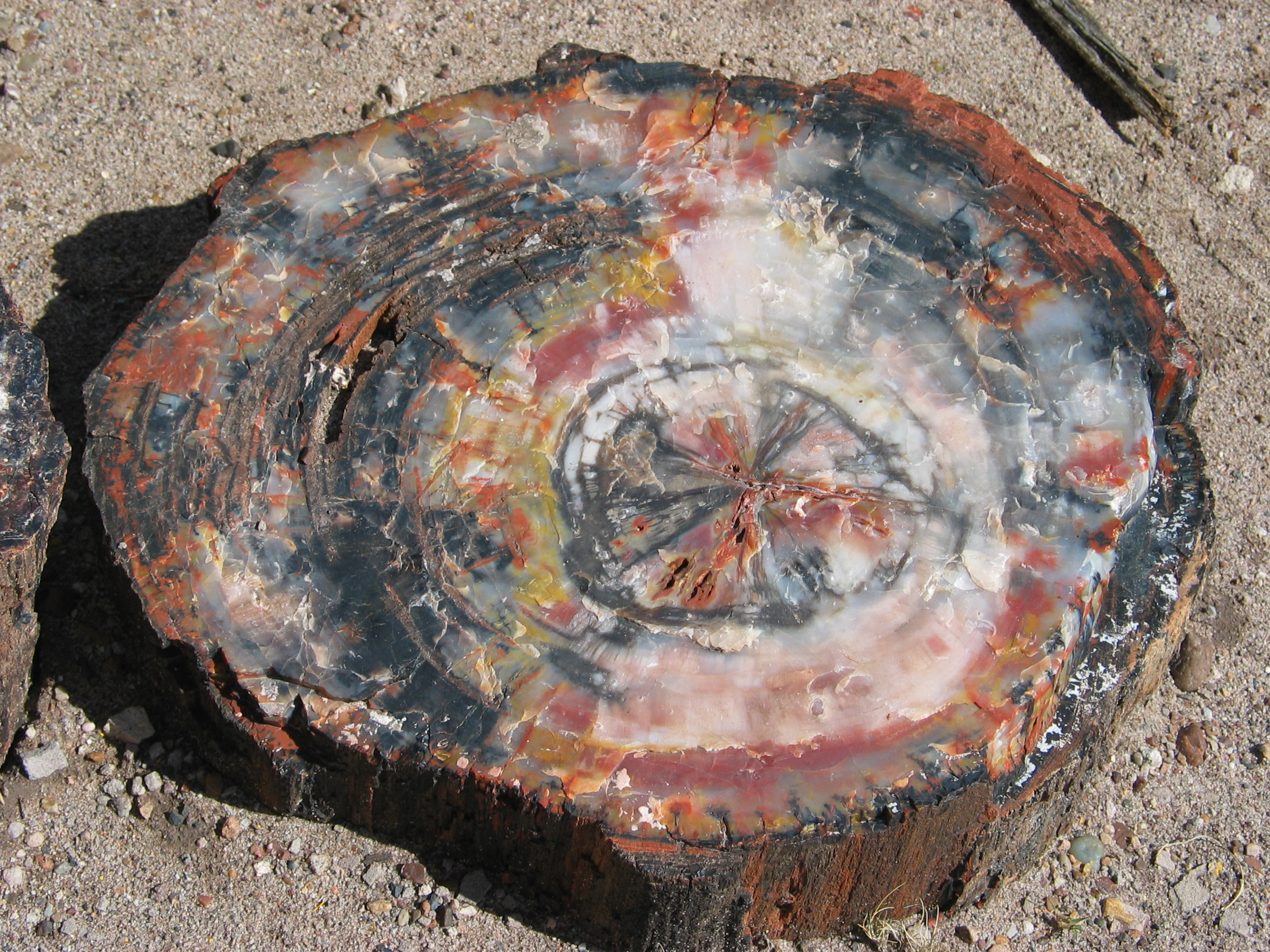|
Climate Science
Climatology (from Greek , ''klima'', "slope"; and , '' -logia'') or climate science is the scientific study of Earth's climate, typically defined as weather conditions averaged over a period of at least 30 years. Climate concerns the atmospheric condition during an extended to indefinite period of time; weather is the condition of the atmosphere during a relative brief period of time. The main topics of research are the study of climate variability, mechanisms of climate changes and modern climate change. This topic of study is regarded as part of the atmospheric sciences and a subdivision of physical geography, which is one of the Earth sciences. Climatology includes some aspects of oceanography and biogeochemistry. The main methods employed by climatologists are the analysis of observations and modelling of the physical processes that determine climate. Short term weather forecasting can be interpreted in terms of knowledge of longer-term phenomena of climate, for insta ... [...More Info...] [...Related Items...] OR: [Wikipedia] [Google] [Baidu] |
Modern Climate Change
Present-day climate change includes both global warming—the ongoing increase in global average temperature—and its wider effects on Earth's climate system. Climate change in a broader sense also includes previous long-term changes to Earth's climate. The current rise in global temperatures is driven by human activities, especially fossil fuel burning since the Industrial Revolution. Fossil fuel use, deforestation, and some agricultural and industrial practices release greenhouse gases. These gases absorb some of the heat that the Earth radiates after it warms from sunlight, warming the lower atmosphere. Carbon dioxide, the primary gas driving global warming, has increased in concentration by about 50% since the pre-industrial era to levels not seen for millions of years. Climate change has an increasingly large impact on the environment. Deserts are expanding, while heat waves and wildfires are becoming more common. Amplified warming in the Arctic has contr ... [...More Info...] [...Related Items...] OR: [Wikipedia] [Google] [Baidu] |
Climate Change
Present-day climate change includes both global warming—the ongoing increase in Global surface temperature, global average temperature—and its wider effects on Earth's climate system. Climate variability and change, Climate change in a broader sense also includes previous long-term changes to Earth's climate. The current rise in global temperatures is Scientific consensus on climate change, driven by human activities, especially fossil fuel burning since the Industrial Revolution. Fossil fuel use, Deforestation and climate change, deforestation, and some Greenhouse gas emissions from agriculture, agricultural and Environmental impact of concrete, industrial practices release greenhouse gases. These gases greenhouse effect, absorb some of the heat that the Earth Thermal radiation, radiates after it warms from sunlight, warming the lower atmosphere. Carbon dioxide, the primary gas driving global warming, Carbon dioxide in Earth's atmosphere, has increased in concentratio ... [...More Info...] [...Related Items...] OR: [Wikipedia] [Google] [Baidu] |
Pacific Decadal Oscillation
The Pacific decadal oscillation (PDO) is a robust, recurring pattern of ocean-atmosphere climate variability centered over the mid-latitude Pacific basin. The PDO is detected as warm or cool surface waters in the Pacific Ocean, north of 20°N. Over the past century, the amplitude of this climate pattern has varied irregularly at interannual-to-interdecadal time scales (meaning time periods of a few years to as much as time periods of multiple decades). There is evidence of reversals in the prevailing polarity (meaning changes in cool surface waters versus warm surface waters within the region) of the oscillation occurring around 1925, 1947, and 1977; the last two reversals corresponded with dramatic shifts in salmon production regimes in the North Pacific Ocean. This climate pattern also affects coastal sea and continental surface air temperatures from Alaska to California. During a " warm", or "positive", phase, the west Pacific becomes cooler and part of the eastern ocean warm ... [...More Info...] [...Related Items...] OR: [Wikipedia] [Google] [Baidu] |
Barometer
A barometer is a scientific instrument that is used to measure air pressure in a certain environment. Pressure tendency can forecast short term changes in the weather. Many measurements of air pressure are used within surface weather analysis to help find surface Trough (meteorology), troughs, pressure systems and weather front, frontal boundaries. Barometers and pressure altimeters (the most basic and common type of altimeter) are essentially the same instrument, but used for different purposes. An altimeter is intended to be used at different levels matching the corresponding atmospheric pressure to the altitude, while a barometer is kept at the same level and measures subtle pressure changes caused by weather and elements of weather. The average atmospheric pressure on the Earth's surface varies between 940 and 1040 hPa (mbar). The average atmospheric pressure at sea level is 1013 hPa (mbar). Etymology The word ''wikt:barometer, barometer'' is derived from the Ancient Gr ... [...More Info...] [...Related Items...] OR: [Wikipedia] [Google] [Baidu] |
Thermometer
A thermometer is a device that measures temperature (the hotness or coldness of an object) or temperature gradient (the rates of change of temperature in space). A thermometer has two important elements: (1) a temperature sensor (e.g. the bulb of a mercury-in-glass thermometer or the pyrometric sensor in an infrared thermometer) in which some change occurs with a change in temperature; and (2) some means of converting this change into a numerical value (e.g. the visible scale that is marked on a mercury-in-glass thermometer or the digital readout on an infrared model). Thermometers are widely used in technology and industry to monitor processes, in meteorology, in medicine (''medical thermometer''), and in scientific research. A standard scale While an individual thermometer is able to measure degrees of hotness, the readings on two thermometers cannot be compared unless they conform to an agreed scale. Today there is an absolute thermodynamic temperature scale. Internat ... [...More Info...] [...Related Items...] OR: [Wikipedia] [Google] [Baidu] |
Geological Society
The Geological Society of London, known commonly as the Geological Society, is a learned society based in the United Kingdom. It is the oldest national geological society in the world and the largest in Europe, with more than 12,000 Fellows. Fellows are entitled to the postnominal FGS (Fellow of the Geological Society), over 2,000 of whom are Chartered Geologists (CGeol). The Society is a registered charity, no. 210161. It is also a member of the Science Council, and is licensed to award Chartered Scientist to qualifying members. The mission of the society is: "Making geologists acquainted with each other, stimulating their zeal, inducing them to adopt one nomenclature, facilitating the communication of new facts and ascertaining what is known in their science and what remains to be discovered". History The Society was founded on 13 November 1807 at the Freemasons' Tavern, Great Queen Street, in the Covent Garden district of London. It was partly the outcome of a previous clu ... [...More Info...] [...Related Items...] OR: [Wikipedia] [Google] [Baidu] |
Shaanxi
Shaanxi is a Provinces of China, province in north Northwestern China. It borders the province-level divisions of Inner Mongolia to the north; Shanxi and Henan to the east; Hubei, Chongqing, and Sichuan to the south; and Gansu and Ningxia to the west. Shaanxi covers an area of over with about 37 million people, the 16th-largest in China. Xi'anwhich includes the sites of the former capitals Fenghao and Chang'anis the provincial capital and largest city in Northwest China and also one of the oldest cities in China and the oldest of the Historical capitals of China, Four Ancient Capitals, being the capital for the Western Zhou, Western Han, Sima Jin, Jin, Sui dynasty, Sui and Tang dynasty, Tang List of Chinese dynasties, dynasties. Xianyang, which served as the capital of the Qin dynasty (221–206 BC), is just north across the Wei River. The other Prefectures of China, prefecture-level prefecture-level city, cities into which the province is divided are Ankang, Baoji, Hanzho ... [...More Info...] [...Related Items...] OR: [Wikipedia] [Google] [Baidu] |
Yan'an
Yan'an; ; Chinese postal romanization, alternatively spelled as Yenan is a prefecture-level city in the Shaanbei region of Shaanxi Province of China, province, China, bordering Shanxi to the east and Gansu to the west. It administers several counties, including Zhidan County, Zhidan (formerly Bao'an), which served as the headquarters of the Chinese Communist Party (CCP) before the city of Yan'an proper took that role. Yan'an was near the endpoint of the Long March, and became the center of the Chinese Communist Revolution from late 1935 to early 1947. Chinese communists celebrate Yan'an as the birthplace of the revolution. As of 2019, Yan'an has approximately 2,255,700 permanent residents. History Yan'an was populated at least as early as the Xia dynasty, when it formed part of . The area was not part of the subsequent Shang dynasty, and was instead inhabited by the Guifang, who fought against the Shang dynasty. The area was later inhabited by the Quanrong and the Xianyun dur ... [...More Info...] [...Related Items...] OR: [Wikipedia] [Google] [Baidu] |
Bamboo
Bamboos are a diverse group of mostly evergreen perennial plant, perennial flowering plants making up the subfamily (biology), subfamily Bambusoideae of the grass family Poaceae. Giant bamboos are the largest members of the grass family, in the case of ''Dendrocalamus sinicus'' having individual stalks (Culm (botany), culms) reaching a length of , up to in thickness and a weight of up to . The internodes of bamboos can also be of great length. ''Kinabaluchloa, Kinabaluchloa wrayi'' has internodes up to in length. and ''Arthrostylidium schomburgkii'' has internodes up to in length, exceeded in length only by Cyperus papyrus, papyrus. By contrast, the stalks of the tiny bamboo Raddiella, ''Raddiella vanessiae'' of the savannas of French Guiana measure only in length by about in width. The origin of the word "bamboo" is uncertain, but it most likely comes from the Dutch language, Dutch or Portuguese language, Portuguese language, which originally borrowed it from Malay langua ... [...More Info...] [...Related Items...] OR: [Wikipedia] [Google] [Baidu] |
Petrified
In geology, petrifaction or petrification () is the process by which organic material becomes a fossil through the replacement of the original material and the filling of the original pore spaces with minerals. Petrified wood typifies this process, but all organisms, from bacteria to vertebrates, can become petrified (although harder, more durable matter such as bone, beaks, and shells survive the process better than softer remains such as muscle tissue, feathers, or skin). Petrification takes place through a combination of two similar processes: permineralization and replacement. These processes create replicas of the original specimen that are similar down to the microscopic level. Processes Permineralization One of the processes involved in petrifaction is permineralization. The fossils created through this process tend to contain a large amount of the original material of the specimen. This process occurs when groundwater containing dissolved minerals (most commonly ... [...More Info...] [...Related Items...] OR: [Wikipedia] [Google] [Baidu] |
Shen Kuo
Shen Kuo (; 1031–1095) or Shen Gua, courtesy name Cunzhong (存中) and Art name#China, pseudonym Mengqi (now usually given as Mengxi) Weng (夢溪翁),Yao (2003), 544. was a Chinese polymath, scientist, and statesman of the Song dynasty (960–1279). Shen was a master in many fields of study including Chinese mathematics, mathematics, history of optics, optics, and horology. In his career as a civil servant, he became a finance minister, governmental state inspector, head official for the Chinese astronomy, Bureau of Astronomy in the Song court, Assistant Minister of Imperial Hospitality, and also served as an Chancellor (education), academic chancellor.Needham (1986), Volume 4, Part 2, 33. At court his political allegiance was to the Reformist faction known as the History of the Song dynasty#Partisans and factions, reformers and conservatives, New Policies Group, headed by Chancellor of China, Chancellor Wang Anshi (1021–1085). In his ''Dream Pool Essays'' or ''Dream Torren ... [...More Info...] [...Related Items...] OR: [Wikipedia] [Google] [Baidu] |









